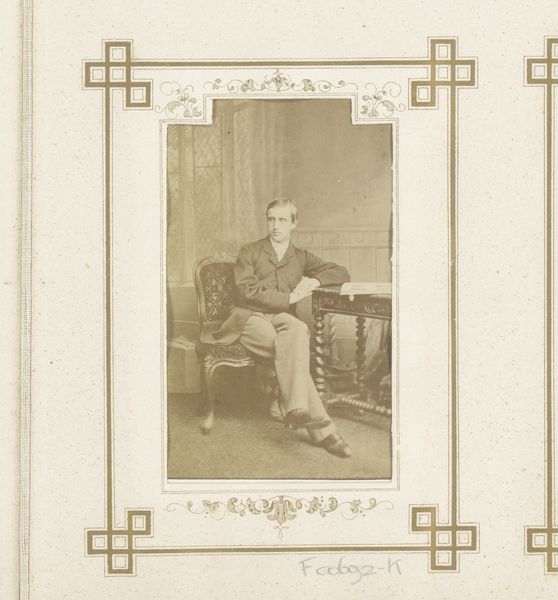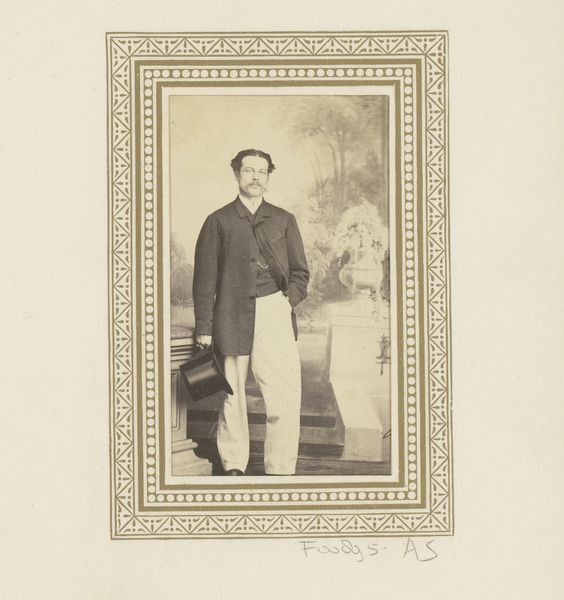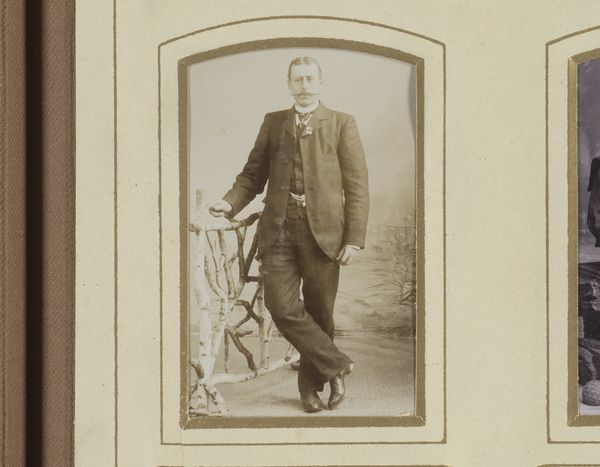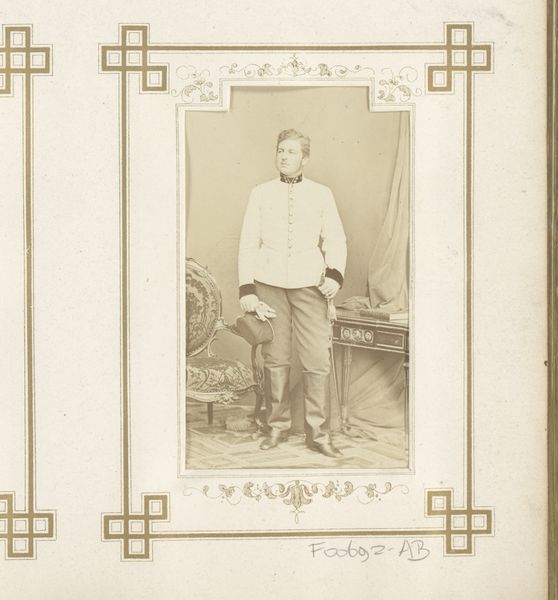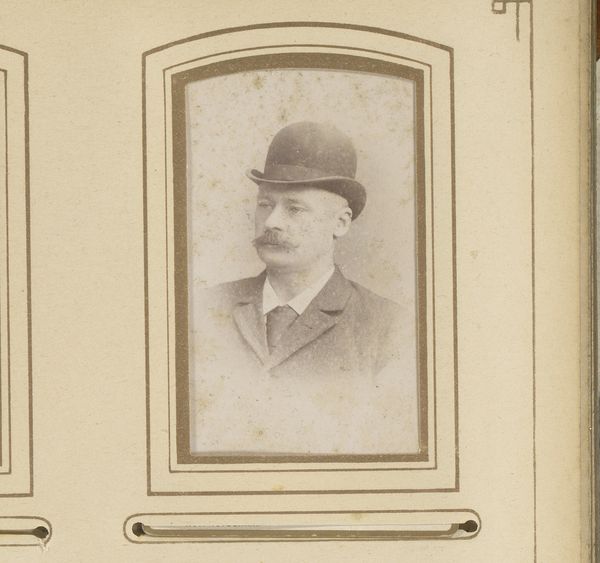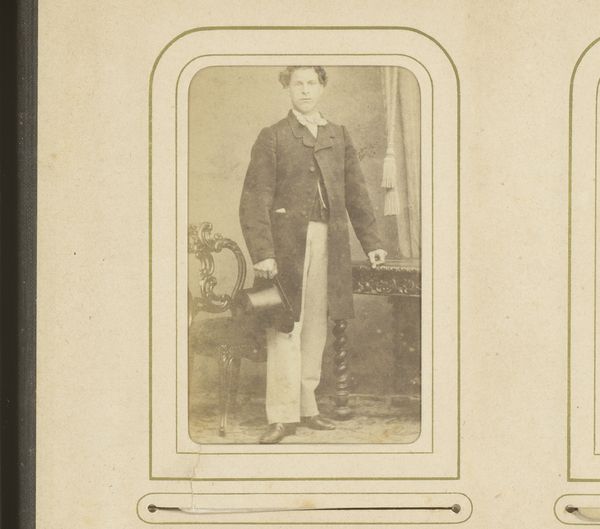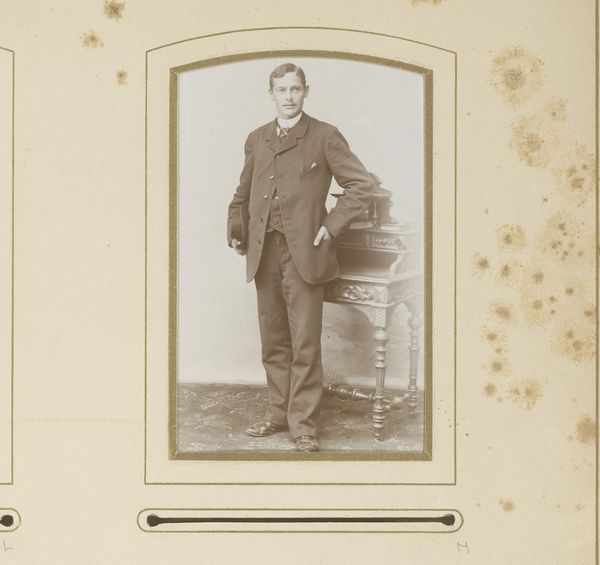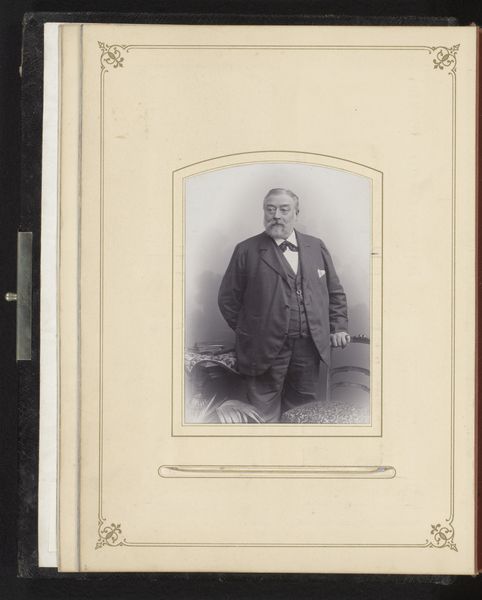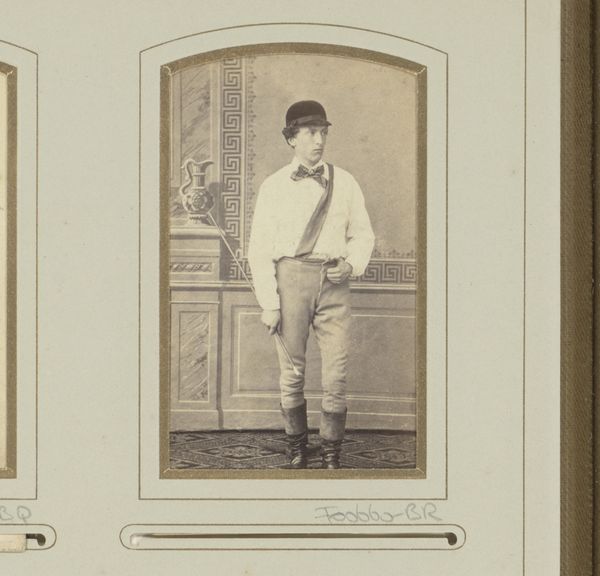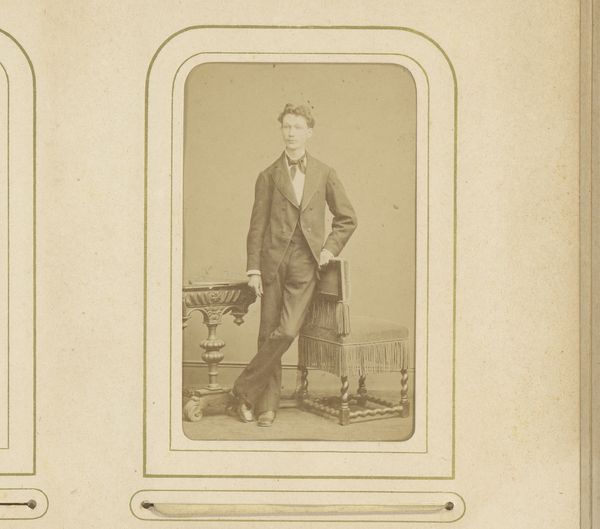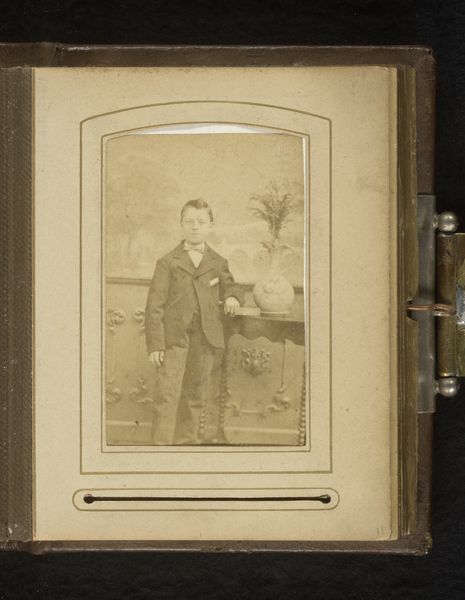
Dimensions: height 89 mm, width 52 mm
Copyright: Rijks Museum: Open Domain
Curator: Before us is "Portret van een man met pet", a striking albumen print made by Wilhelm Engel between 1859 and 1863. What are your first thoughts? Editor: There's an undeniable sense of formality here. The gentleman’s stern gaze and carefully posed stance almost radiate a somber, introspective mood, a far cry from some of the grand romantic portraiture of the era. Curator: The sobriety resonates with a critical period in photography's history, where it began solidifying itself as a reliable means of capturing identity and status, thus creating accessible documentation of society. This albumen print, with its sharp details, enabled a new level of visibility and social mobility. Editor: Absolutely. The portrait offers access and insight, but let's look closer. The man holds flowers, a rather gentle attribute in contrast to his formal dress. His hat, though smart, seems to subtly declare membership to something larger. There is almost a coded message. What affiliations, identities were communicated and, at the same time, concealed by such images? Curator: These subtle inclusions speak volumes. The choice to present himself with the flowers offers an intimate peek, an act of careful, conscious staging within very regulated constraints. The military touches point towards a public persona, highlighting how identity and status were carefully cultivated through the relatively novel medium of photography. Editor: The technology may have been novel, but I also see clear lines with other portrait traditions here – that pose, that carefully considered placement, links to very old, exclusive representational power dynamics. This portrait both democratises access, and clearly shores up particular structures. Curator: Precisely, technology intertwines with inherited structures and codes. It's this relationship that allows us a deeper understanding of the democratization, visibility, and politics inherent in the making and distribution of such portraits during the mid-19th century. The subject becomes a spectacle, yes, but only under the very precise terms of the portrait sitting itself, re-framing a new kind of public performance. Editor: Ultimately, this image serves as an invaluable archive of shifting cultural and artistic norms. Thank you for illuminating these intricate connections, allowing us to truly engage with not just this photographic portrait, but also its context and its layered meanings. Curator: The pleasure was all mine, highlighting just some of the avenues this evocative portrait opens up for us.
Comments
No comments
Be the first to comment and join the conversation on the ultimate creative platform.
